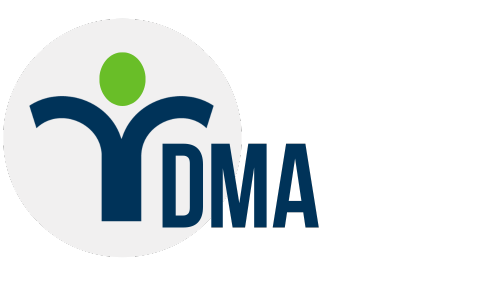Last updated: May 21 2025
Leadership Opportunity: Canada’s Shrinking Head Office Economy

Geoff Currier
As Canada’s head office economy continues to contract, the responsibility for economic growth, innovation, and leadership is increasingly falling to small- and mid-sized businesses. This shift presents both a challenge and an opportunity. And, it’s exactly why the DMA – Small Business Services Specialist Program should be a critical part of your professional development library. Designed to equip professionals with the tools to support sustainable business growth and succession, this online designation program prepares you to develop leadership skills from the ground up as Corporate Canada is experiencing a disturbing trend. Here’s more:
Head Offices in Canada: There are dozens of ways to measure the success of a nation’s economy. One of those which is rarely, if ever, reported, is the number of head offices in that country. That number can reveal much about whether or not that country is open for business. According to Statistics Canada, we had 2,655 head office locations in 2023. That sounds like a lot but compared to what?
That figure actually represents a decline of .3% from the previous year, which doesn’t sound like much but it’s part of a long-term trend. Since 2012 Canada has seen a decline in the number of head offices of 4.9%. The one bright spot in this troubling news is that there were more people working at head offices in 2023, (211,445) an increase of some 250 people from 2022.
As you might expect, Toronto boasts the most head offices with 689, followed by Montreal with 372, Vancouver with 236 and Calgary with 197. That leaves just 1,161 for the rest of Canada.
Why the Losses? How do we account for the trend of losing head offices? With the drop in oil prices between 2014 and 2016, some companies left or merged with other companies in Canada. Some will suggest that restrictive government regulations make doing business in Canada too onerous. This last point may explain why the decline in the number of head offices in our country is not confined to the oil and energy sector. All provinces and sectors are losing ground.
If a business pulls up stakes and moves it is invariably due to the local tax structure. Canada’s system is in dire need of serious reform, particularly when it comes to creating a healthy business environment. Recent developments have finally prompted leaders to consider removing some of our own internal trade barriers. It shouldn’t be simpler for British Columbia to trade with Washington than with Alberta.
Canada’s environmental regulations are more stringent than those in the United States, making doing business here more challenging for some sectors.
While Canada’s tax structure assists small businesses in some ways, it punishes those which manage to scale up. Federal and provincial taxes will drive companies to tax friendlier jurisdictions, resulting in job losses and the loss of tax revenue. If a province has a payroll tax, that can be an impediment to acquiring or keeping a head office, or a business of any kind for that matter.
Our personal income taxes are also higher than those in the United States and often people qualified to run or work at head offices, can work anywhere. There may be a more attractive option for them on the other side of the 49th parallel. The brain drain is a long-established fact in Canada. This holds true for people not working at head offices as well, such as health care professionals, scientists, researchers and those in the tech industry.
Why it Matters: The number of people employed in Canada’s head offices is relatively small but that doesn’t paint the real picture. Jock Finlayson is a senior fellow at the right of centre Fraser Institute and wrote in August of 2024 “A robust head office sector bolsters the tax base to help pay for public services. It al so has a positive impact on the extent of private-sector support for education, health care, the arts and charities.” Finlayson explains that this is so because generally people working at head offices are high-income earners and contribute greatly to our tax base and the overall economy. If those people leave, so do their tax contributions and the money they spend in their communities.
so has a positive impact on the extent of private-sector support for education, health care, the arts and charities.” Finlayson explains that this is so because generally people working at head offices are high-income earners and contribute greatly to our tax base and the overall economy. If those people leave, so do their tax contributions and the money they spend in their communities.
The Bottom Line: Almost nothing has been reported on this trend over the last decade. Neither the Canadian public nor the government seem favourably disposed to large businesses. This attitude is keenly felt in the boardrooms of the nation, and we are witnessing the results. If we are to put the brakes on this troubling trend, our federal government must take the lead and help create a more inviting business environment.
What You Can Do: Build Local Leadership Capacity with the DMA™ Program
In the face of a shrinking head office economy, Canada needs strong, well-informed small business leadership. Whether you’re an advisor supporting entrepreneurs or a business owner preparing to scale or exit, the DMA™ – Small Business Management Specialist Program empowers you to take a leadership role in building a more resilient and independent business sector.
There are six courses in the program and you can start anytime.
- Leading Teams
- Building Business Plans
- Scaling Business Operations
- Understanding Contracts
- Privacy Principles
- Succession Planning
Through fully online, self-paced courses, you’ll gain practical skills in:
- Financial statement analysis and planning
- Employment, contract, and privacy law
- Tax-efficient structures: personal, corporate, cross-border, and trust
- Leadership communications with lawyers, bankers, and financial advisors
- Succession and continuity strategies
Enroll by June 15 to save up to 40% on full program tuition.
Courses are tax deductible and qualify for the Canada Training Credit.
Start building your strategic advisory skill set today.
Visit www.knowledgebureau.com or call 1-866-953-4769.
